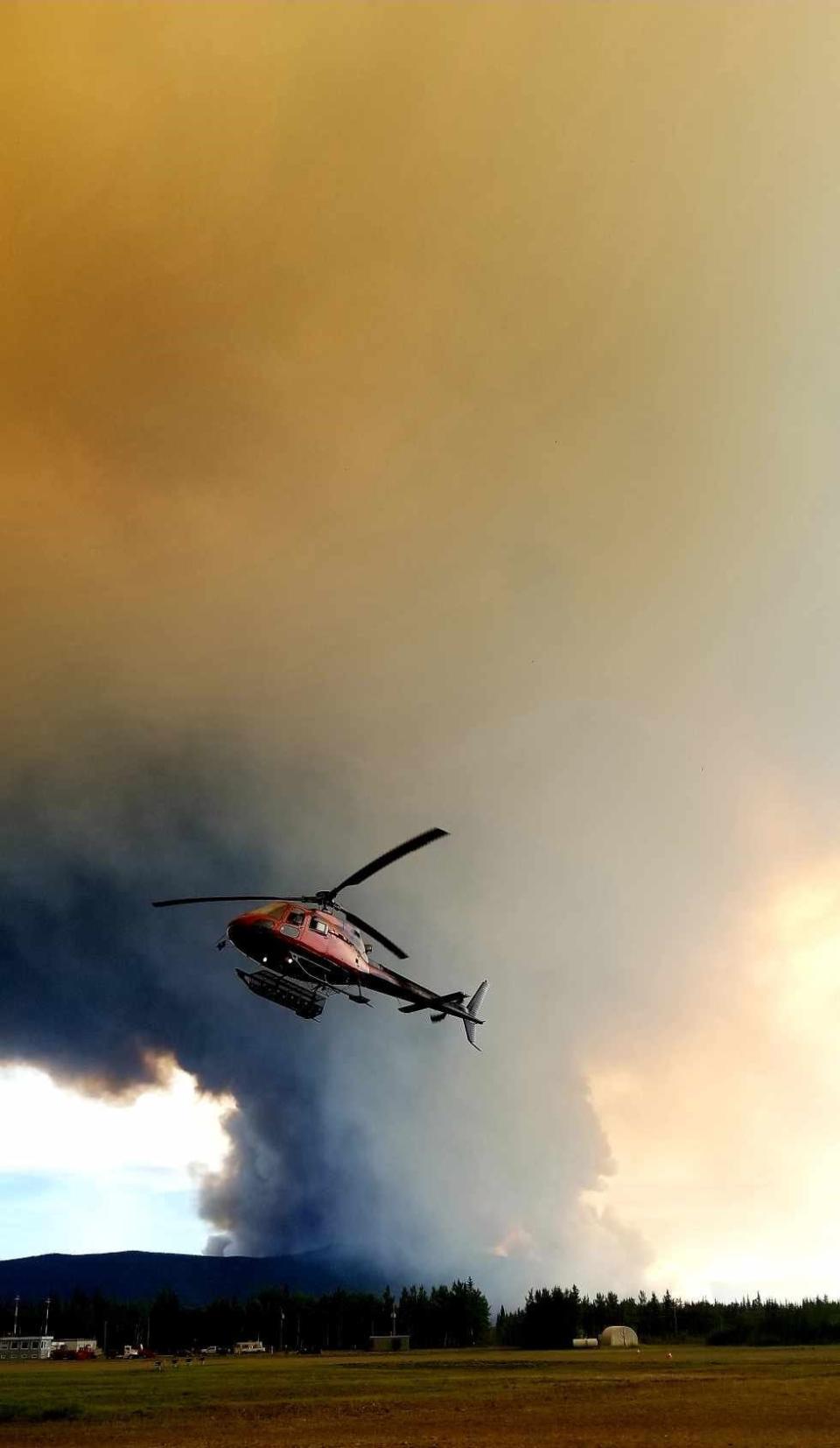Yukon fire season 'normal' so far, with major fires unlikely in coming weeks, officials say
Yukon likely won't see any major wildfires for at least the next month, according to emergency officials.
Speaking at a media briefing on Thursday, Yukon Wildland Fire Management meteorologist Michael Smith described the season so far as the "first normal start of the fire year" in several years.
"What we base that on mostly is how dry the forest fuels are right now, and what we're seeing with weather coming up," he said.
Smith said the territory is expected to become a little warmer and drier in the coming weeks, but not enough to amplify the fire risk in a dramatic way. Instead, risk will increase slowly and gradually, he said.
Conditions are dry right now in some of the central territory, but elsewhere it's "not terribly dry," Smith said.
"So despite the fact we have had fires in some of those areas, they're not burning deep, they're not burning the big, big fuels that make a fire turn into sort of a two-month endeavour rather than a two- or three-day-and-wait-for-rain endeavour," Smith said.
"So that's all to say, any starts that we do have in the next couple of weeks are not likely to be huge problems."
Yukon has seen 10 wildfires so far this year with fire crews only battling two of those. One started a few days ago across the river from Dawson City and was about five hectares in size on Thursday, but "definitely very quiet" after some rain, Smith said.
Another fire burning west of Ross River was about 2,000 hectares as of Thursday. Fire crews were working to prevent any property or infrastructure damage but full suppression of the fire was "unlikely to be necessary or possible," according to the government's online wildfire hub.
'No real red flags out there'
Smith said it's harder to predict conditions in the territory later in July or August, but said there is a "slight risk" of above-normal temperatures.
"Which doesn't tell us a whole bunch, but does tell us there's no real red flags out there for getting into a situation like we were last July, August, after several weeks of really hot and dry, and no rain," he said.
"So relative to past seasons, it will probably end up being a little bit slower of a fire season than we have been seeing."

Last summer, the territory saw several significant wildfires and two communities — Mayo and Old Crow — were each under evacuation orders for a period.
Thursday's media briefing also included an update on the current flood conditions in the territory. Earlier this spring, evacuation alerts were issued in the Dawson City and Old Crow areas due to flooding and were later lifted after the risk passed.
Greg Blackjack, director of Yukon's Emergency Measures Organization, said there's little concern about flooding anymore this season.
"We monitor the water daily, and things are looking very nice this spring. We haven't seen the crazy rises that we have in the past few seasons. So we're looking like a normal spring," he said.


